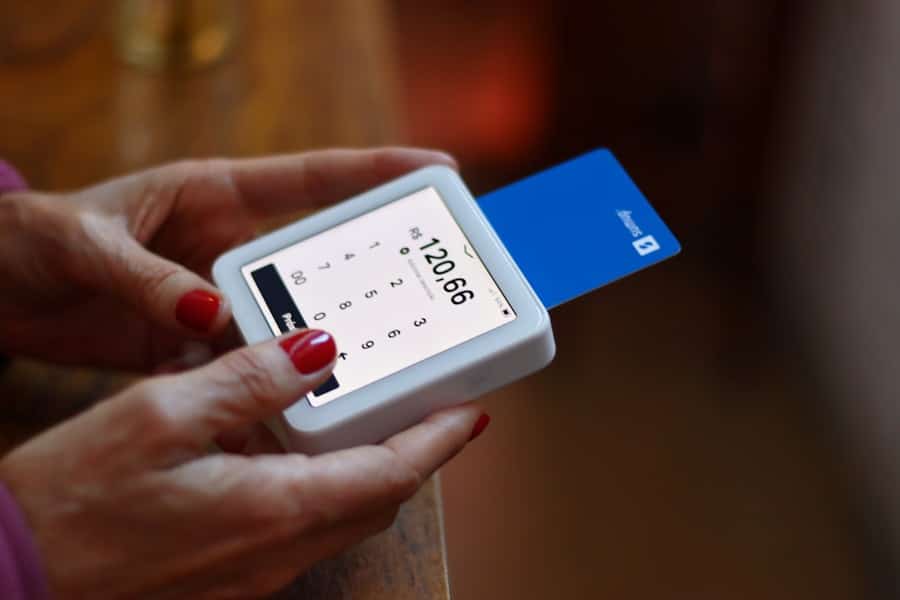In an increasingly interconnected world, the importance of robust security solutions for businesses cannot be overstated. Organizations face a myriad of threats, ranging from physical break-ins to sophisticated cyberattacks. As such, the need for comprehensive security strategies that encompass both physical and digital realms has become paramount.
Business security solutions are designed to protect assets, safeguard sensitive information, and ensure the safety of employees and customers alike. The landscape of security is continually evolving, driven by technological advancements and the ever-changing tactics employed by malicious actors. The implementation of effective security solutions is not merely a reactive measure; it is a proactive strategy that can significantly enhance a company’s reputation and operational efficiency.
By investing in security measures, businesses can mitigate risks, reduce potential losses, and foster a culture of safety and trust. This article delves into various aspects of business security solutions, exploring physical security measures, cyber security protocols, access control systems, surveillance technologies, training programs, and integrated approaches that can collectively fortify an organization’s defenses.
Key Takeaways
- Business security solutions encompass physical, cyber, access control, surveillance, monitoring, training, and integrated solutions to protect businesses from various threats.
- Physical security solutions include measures such as security guards, access control systems, and surveillance cameras to protect business premises and assets.
- Cyber security solutions involve implementing firewalls, encryption, and regular security audits to safeguard business data and systems from cyber threats.
- Access control solutions enable businesses to manage and restrict access to certain areas or information within the organization, enhancing overall security.
- Surveillance and monitoring solutions utilize cameras, sensors, and alarms to monitor and record activities within and around the business premises, deterring potential security breaches.
Physical Security Solutions for Businesses
Physical security solutions are foundational to any comprehensive security strategy. These measures are designed to protect a business’s physical assets from theft, vandalism, and unauthorized access. One of the most common forms of physical security is the installation of barriers such as fences, gates, and bollards.
These structures serve as the first line of defense against intruders and can deter potential threats before they escalate. For instance, a retail store might employ a combination of high fences and security gates to protect its premises after hours, thereby reducing the likelihood of break-ins. In addition to barriers, businesses often invest in alarm systems that provide real-time alerts in the event of unauthorized access.
Modern alarm systems can be integrated with motion detectors and glass break sensors to enhance their effectiveness.
Furthermore, the presence of security personnel can significantly bolster physical security.
Trained security guards not only monitor premises but also serve as a visible deterrent to potential criminals. Their ability to respond quickly to incidents can prevent minor issues from escalating into major crises.
Cyber Security Solutions for Businesses

As businesses increasingly rely on digital technologies, cyber security has emerged as a critical component of overall security strategies. Cyber threats can take many forms, including malware attacks, phishing scams, and data breaches. To combat these threats, organizations must implement a multi-layered approach to cyber security that encompasses various protective measures.
Firewalls are one of the first lines of defense against cyber threats, acting as barriers between trusted internal networks and untrusted external networks. They monitor incoming and outgoing traffic and can block malicious attempts to access sensitive data. Another essential aspect of cyber security is the use of encryption technologies.
By encrypting sensitive data both at rest and in transit, businesses can ensure that even if data is intercepted or accessed without authorization, it remains unreadable to unauthorized users. For instance, financial institutions often employ encryption protocols to protect customer information during online transactions. Additionally, regular software updates and patch management are crucial in maintaining cyber security.
Outdated software can contain vulnerabilities that cybercriminals exploit; therefore, keeping systems up-to-date is vital for safeguarding against potential attacks.
Access Control Solutions for Businesses
Access control solutions play a pivotal role in managing who can enter specific areas within a business premises. These systems are designed to restrict access to sensitive areas based on user credentials or permissions. Traditional key-based systems have largely been replaced by more advanced technologies such as key cards, biometric scanners, and mobile access solutions.
For example, many organizations now utilize key card systems that allow employees to gain entry to secure areas by swiping their cards at designated readers. This not only enhances security but also provides an audit trail of who accessed which areas and when. Biometric access control systems take security a step further by using unique biological traits such as fingerprints or facial recognition to grant access.
These systems are particularly effective in high-security environments where unauthorized access could lead to significant risks. For instance, a pharmaceutical company may implement biometric scanners at its research labs to ensure that only authorized personnel can enter sensitive areas where proprietary information is stored. Additionally, mobile access solutions enable employees to use their smartphones as digital keys, providing convenience while maintaining high levels of security.
Surveillance and Monitoring Solutions for Businesses
Surveillance and monitoring solutions are integral components of a comprehensive business security strategy. The deployment of video surveillance systems allows organizations to monitor activities in real-time and record footage for later review. Modern surveillance cameras come equipped with advanced features such as high-definition video quality, night vision capabilities, and motion detection technology.
For instance, a shopping mall may install high-definition cameras throughout its premises to monitor foot traffic and deter theft or vandalism. Moreover, the integration of artificial intelligence (AI) into surveillance systems has revolutionized monitoring capabilities. AI-powered cameras can analyze video feeds in real-time to identify suspicious behavior or recognize faces in crowds.
This technology enables businesses to respond swiftly to potential threats and enhances overall situational awareness. Additionally, remote monitoring solutions allow business owners to keep an eye on their premises from anywhere in the world via mobile devices or computers. This capability is particularly beneficial for businesses with multiple locations or those that operate outside regular hours.
Security Training and Awareness Solutions for Businesses

While technology plays a crucial role in enhancing business security, human factors remain one of the most significant vulnerabilities organizations face. Security training and awareness programs are essential for educating employees about potential threats and best practices for maintaining security protocols. Regular training sessions can cover topics such as recognizing phishing attempts, safe internet browsing habits, and proper handling of sensitive information.
For example, a company might conduct quarterly training workshops where employees learn how to identify suspicious emails and report them promptly. Creating a culture of security awareness within an organization is vital for ensuring that all employees understand their role in maintaining security protocols. This can be achieved through ongoing communication about security policies and procedures, as well as encouraging employees to report any suspicious activities they observe.
Additionally, organizations may implement simulated phishing attacks to test employees’ responses and reinforce training concepts. By fostering an environment where employees feel empowered to take an active role in security efforts, businesses can significantly reduce their vulnerability to both physical and cyber threats.
Integrated Security Solutions for Businesses
The complexity of modern threats necessitates an integrated approach to business security solutions that combines various elements into a cohesive strategy. Integrated security solutions allow organizations to streamline their security efforts by consolidating different systems into a unified platform. For instance, combining physical security measures such as access control systems with cyber security protocols creates a holistic approach that addresses both physical and digital vulnerabilities.
One example of integrated security is the use of centralized management software that allows businesses to monitor surveillance cameras, alarm systems, and access control logs from a single interface. This not only enhances operational efficiency but also enables quicker response times in the event of an incident. Furthermore, integration facilitates data sharing between different systems; for example, if an access control system detects unauthorized entry, it can automatically trigger alarms and alert surveillance cameras to focus on the affected area.
Choosing the Right Security Solutions for Your Business
Selecting the appropriate security solutions for a business requires careful consideration of various factors including the nature of the business, its size, industry-specific risks, and budget constraints. Organizations must conduct thorough risk assessments to identify vulnerabilities and prioritize their security needs accordingly. Engaging with experienced security professionals can provide valuable insights into the most effective strategies tailored to specific operational requirements.
Ultimately, the goal is to create a comprehensive security framework that encompasses physical protection measures, cyber defenses, access control mechanisms, surveillance technologies, employee training programs, and integrated solutions that work harmoniously together. By adopting a proactive approach to business security and continuously evaluating and updating their strategies in response to emerging threats, organizations can safeguard their assets and ensure long-term success in an ever-evolving landscape.
In the ever-evolving landscape of business security, staying informed about the latest technological advancements is crucial. While the article “Review: Top Security Solutions for Businesses” provides an in-depth analysis of the best security measures for companies, it’s also important to consider the tools that support a secure and efficient work environment. For instance, choosing the right technology for your team can significantly impact productivity and security. An insightful resource to explore is the article on selecting the right laptop for educational purposes, which can be adapted for business needs as well.


